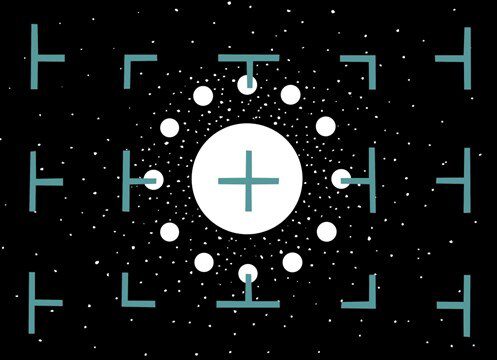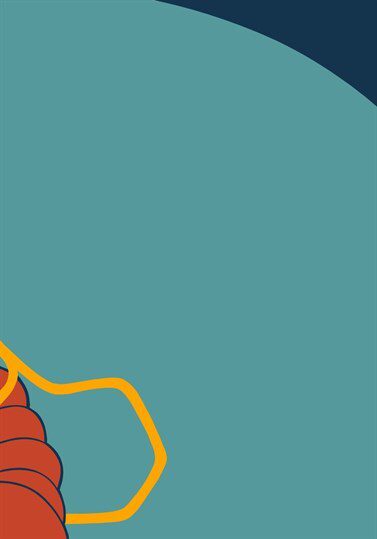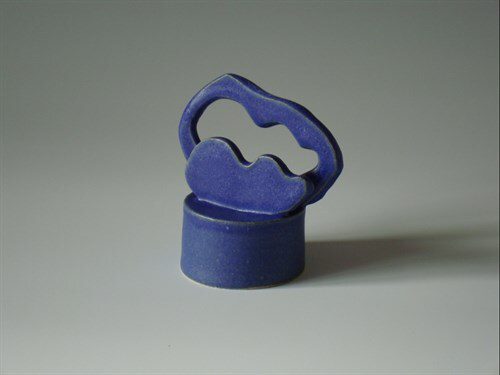Wendy Abbott: Artist of the Month: July 2013

Wendy Abbott
We interview Wendy Abbott about her interest in space and flight, her love of colour and how the art world has changed over her career.
Ruth Wilbur: What inspires you? Which other artists do you admire?
Wendy Abbott: Themes of science, nature and our place in the natural world dominate my work. I am fascinated by the act of making marks and colours, which generate new forms that grow intuitively. Much of my early experimentation with form and colour was influenced by my MFA from the University of Reading and the work of Terry Frost who I studied under.

RW: Can you tell us a little about your work? The titles suggest that some of it is inspired by ideas around the sky, space and flight.
WA: I initially took inspiration for my work from the way that advances in space exploration were reported in the mass media. Our perceptions of reality and our place within the universe changed dramatically when we were able to look down on the earth from above for the first time. Works such as ‘Starfield' (2011), and ‘Destination Untraced’ (2013), were originally realised as oil paintings produced in the late sixties and came as a direct response to newspaper and magazine articles describing Major John Glenn and his profound experiences on leaving the Earth’s atmosphere.
My work ‘Astronauts Elbow’ (2009), expanded on these ideas, whist abstracting questions, initially posed by late romantic artists, like Caspar David Friedrich, related to mankind’s position in nature. The enduring image of the astronaut glancing back over his shoulder towards the fragile blue planet and into the deeper darkness beyond clearly raises questions, both about our exploitation of the earth and also mankind’s relentless passion for exploring the unknown, striving to expand our collective knowledge and experiences to remote, unattainable horizons.

RW: And how do you feel the art world has changed over the course of your career?
WA: During my career, the art world and artistic practice have been in a state of perpetual and rapid change. New advances in science and technology have dramatically changed the way artists communicate their ideas within society. I see this as merely a natural progression and, moreover, vital for art to persist and remain relevant in the context of the modern world. As our perception of reality and what it means to exist in a multi-dimensional universe have been explored by authors Michio Kaku and Umberto Eco, so our ideas about what makes an object or idea ‘art’ have been repeatedly called into question, beginning with Duchamp, continuing through the conceptual movement of the sixties and seventies and ending with contemporary art of the present.
I feel that art should reflect not only the present moment but the context, history and development of the artist. While change is inevitable, it is individual artists who remain consistent to their ideals who continue to produce work which is relevant, irrespective of the specific techniques they employ. With these ideals in mind, I continue to paint in the traditional media of oils, but have expanded my practice into other mediums and dimensions, for example the use of ‘multiples’ in the form of sculptures and digital prints.
RW: You mentioned earlier how colour inspires you, can you tell us a little more about this?
WA: My approach to colour is closely related to music. Both colour and music can be very powerful triggers for human emotion as they create distinct moods and alter our perception of space, enabling the viewer to catch a glimpse of something beyond 'apparent' reality.
Colour and music have the inherent ability to evoke memories and recollections of time and place; just as the era in which a particular piece of music is composed, closely reflects the unique sound world of the composer, so the colour world employed by the artist can be exploited to recollect a chosen moment in time, irrespective of when the artwork was created. I endeavour to achieve this in my own work, without entering into the realms of nostalgia or cliché. I explore the bold use of colour areas in my paintings, prints and sculptures, with each media presenting infinite possibilities for the subtle introduction of texture, depth and shadow, to an apparently two-dimensional surface.

RW: What’s the relationship between your 3D ceramic work and prints?
WA: Usually my two-dimensional images, whether paintings, prints or sketches, come first and inspire and shape my sculptural forms. My sculptural forms in turn feed back into and effect how my paintings and prints develop. Through this approach, I also introduce ideas relating to inner space and the spaces between objects in relief. In my two-dimensional work ‘Timelessness’ (2012), and sculptural ceramic work ‘Obscured by Cloud’ (2012), the combination of shadow and profile are key considerations.
RW: What are you currently reading?
WA: Howard Hodgkin by Andrew Graham Dixon (1994-2011) in which he describes Hodgkin as “a representational painter but not a painter of appearances”. Further to this he says “art has always been a form of redemption - a transfiguration of the common place and the very act of turning something into an image”, which is close to my way of thinking.
RW: If you could share one piece of advice, what would it be?
WA: As Max Ernst said: “I believe the best to do is have one eye closed and to look inside, and this is the inner eye. With the other eye, you have it fixed on reality, what is going on around you in the world – a synthesis of objective and subjective life”.
Interview by Ruth Wilbur, July 2013
Artists
Tags, Topics, Artforms, Themes and Contexts, Formats
Share this article
Helping Artists Keep Going
Axis is an artist-led charity supporting contemporary visual artists with resources, connection, and visibility.


